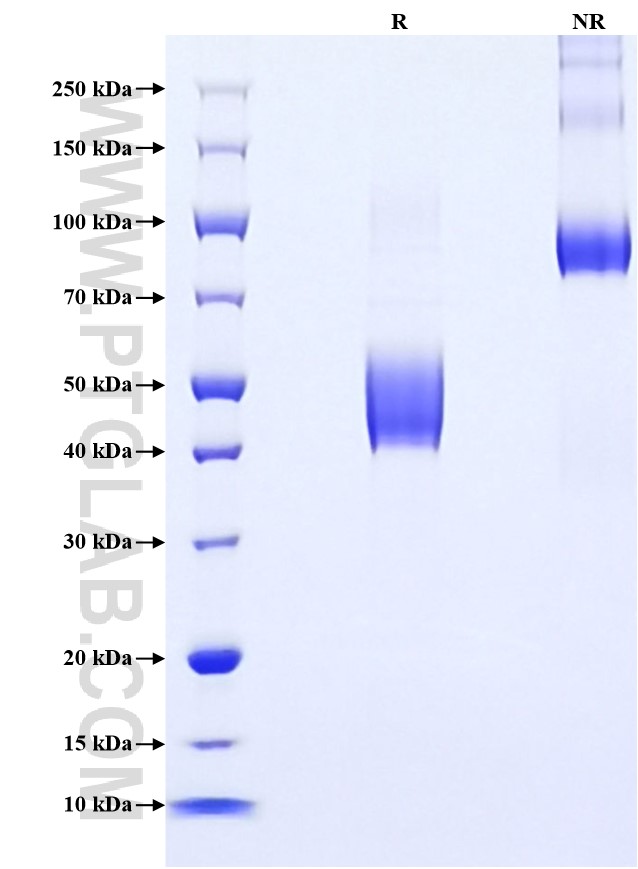Recombinant Mouse IL-4 protein (rFc Tag)
ED50
/
Species
Mouse
Purity
>90 %, SDS-PAGE
GeneID
16189
Accession
P07750
验证数据展示
Technical Specifications
| Purity | >90 %, SDS-PAGE |
| Endotoxin Level | <1.0 EU/μg protein, LAL method |
| Biological Activity |
Not tested |
| Source | HEK293-derived Mouse IL-4 protein His21-Ser140 (Accession# P07750) with a rabbit IgG Fc tag at the C-terminus. |
| Predicted Molecular Mass | 42.8 kDa |
| SDS-PAGE | 40-55 kDa, reducing (R) condition |
| Formulation | Lyophilized from sterile PBS, pH 7.4. Normally 5% trehalose and 5% mannitol are added as protectants before lyophilization. |
| Reconstitution | Briefly centrifuge the tube before opening. Reconstitute at 0.1-0.5 mg/mL in sterile water. |
| Storage |
It is recommended that the protein be aliquoted for optimal storage. Avoid repeated freeze-thaw cycles.
|
| Shipping | The product is shipped at ambient temperature. Upon receipt, store it immediately at the recommended temperature. |
Background
Interleukin-4 (IL-4), a member of the α-helical cytokine family, is produced by activated CD4 + T cells, basophils, and mast cells. It promotes the proliferation and differentiation of antigen presenting cells. IL-4 also plays a pivotal role in antibody isotype switching and stimulates the production of IgE. This cytokine has been applied in the treatment of autoimmune disorder like multiple myeloma, cancer, psoriasis, and arthritis. IL-4 has also been extensively applied to inhibit detrimental effect of Th1. It may promote the growth of epithelial tumors by mediating increased proliferation and survival.
References:
1. Scheller J. et al. (1988). Behring Inst Mitt. Behring Inst Mitt. (83):40-7. 2. Heinrich PC. et al. (2003). Biochem J. 374: 1-20. 3. Rose-John S. et al. (2007). Expert Opin Ther Targets. 11: 613-24. 4. Ming JE. et al. (1989). J Mol Cell Immunol. 4: 203-11. 5. Febbraio MA. et al. (2005). Exerc Sport Sci Rev. 33:114-9. 6. J Appl Physiol. et al. (2005). J Appl Physiol. 98:1154-62.
